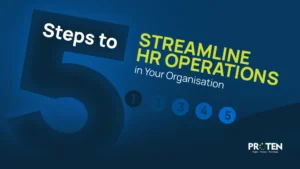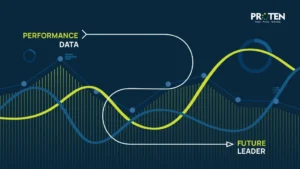Your people are the most valuable asset in your organisation. Their skills, ideas, and energy drive your business forward daily. Yet, even the most dedicated employees are not immune to the pressures of constant deadlines, growing workloads, and increasing expectations. Over time, these pressures can lead to employee burnout, a silent but costly problem that impacts your team’s well-being and your company’s bottom line.
A 2020 study by Gallup shows that 76% of employees experience burnout at work at least sometimes, while 28% feel burnt out very often or always. This is not just a human resources issue. It is a leadership challenge that directly affects your productivity, retention, and workplace culture. If you fail to recognise the early signs of employee burnout, you risk losing your top talent and weakening your organisation from within.
The good news is that burnout often shows early warning signs if you know what to look for. As a leader, it is your responsibility to spot these signals and act before the damage becomes irreversible. Let’s explore what causes employee burnout, how to detect it early, and most importantly, what steps you can take to prevent it.
Why Recognizing Employee Burnout Early Matters
Ignoring the early signs of employee burnout is a costly mistake you want to avoid. The emotional and physical toll on your employees directly affects productivity, innovation, and engagement.
Gallup reports that burnt-out employees are 2.6 times more likely to actively seek a new job and 63% more likely to take a sick day. Beyond individual impact, burnout can spread through your teams, creating a culture of disengagement, rising turnover, and declining performance.
If you wait until employees are visibly struggling, it is often too late to reverse the damage. Catching burnout early allows you to intervene, protect your talent, and sustain long-term business performance.
Key Early Signs of Employee Burnout to Watch For
Employee burnout does not appear overnight. It builds gradually, often leaving subtle signs that many leaders overlook. Your ability to notice these early indicators is crucial.
1. Behavioral Changes Linked to Employee Burnout
One of the first red flags is a noticeable shift in behaviour. Watch for employees who:
- Pull back from team conversations or meetings
- Become increasingly negative or cynical
- Avoid tasks or responsibilities they once handled easily
These changes are often misread as attitude problems. In reality, they may signal an employee who is mentally and emotionally exhausted.
2. Physical and Emotional Symptoms of Employee Burnout
Burnout also manifests physically and emotionally, often before it affects job performance.
- Persistent fatigue, no matter how much rest they get
- Frequent headaches, stomach issues, or unexplained illnesses
- Emotional outbursts, anxiety, or signs of depression
47% of employees say the majority of their stress comes from work. Additionally, 71% of employees believe work-related stress has negatively affected their relationships with others.
3. Work-Related Indicators of Employee Burnout
You will also see burnout reflected in the quality of work:
- Missed deadlines or declining accuracy
- Resistance to feedback or changes
- A noticeable drop in creativity or problem-solving skills
- Disinterest in professional growth or team collaboration
These signs are easy to overlook or dismiss as performance issues, but they are often the final warning before an employee disengages completely.
What Really Causes Employee Burnout?
If you want to prevent employee burnout, you first need to understand what’s fuelling it. Many triggers stem from leadership decisions, even if they are not intentional.
Here are some of the most common workplace triggers that push employees to the brink:
- Unrealistic workloads that leave employees overwhelmed and exhausted
- Lack of control over how they manage their tasks and responsibilities
- Poor communication and weak leadership support, creating confusion and frustration
- Blurred work-life boundaries, especially in remote and hybrid roles
- Lack of recognition, making employees feel undervalued and disengaged
According to Crownview Psychiatric Institute, 87% of employees believe their employers should be doing more to prevent burnout. If this doesn’t make you reflect on your leadership approach, it should. It’s time to take burnout prevention seriously because engaged, healthy employees drive business success.
How Leaders Can Prevent Employee Burnout
Preventing employee burnout is not about offering occasional perks or wellness days. It requires a leadership mindset focused on creating sustainable work environments where people can thrive.
1. Creating a Supportive Culture that Reduces Employee Burnout
Your workplace culture should signal that well-being matters. This starts with building trust, encouraging open conversations, and creating psychological safety where employees feel comfortable raising concerns.
Regular check-ins with your team should not be limited to project updates. Ask your people how they are feeling, listen carefully, and take their concerns seriously.
2. Monitoring Workloads and Managing Expectations to Prevent Employee Burnout
Leaders often unintentionally overload their best performers. Pay attention to how work is distributed. Ensure expectations are realistic, deadlines achievable, and that employees have time to recover after periods of intense work.
Reward quality and thoughtful execution rather than simply celebrating speed or volume. This shift alone can reduce the pressure that fuels burnout.
3. Offering Mental Health Resources to Combat Employee Burnout
Effective burnout prevention includes providing access to mental health resources such as:
- Employee Assistance Programs for confidential support
- Paid mental health days or flexible working arrangements
- Stress management workshops and resilience training
According to the World Economic Forum, companies that invest in mental health support see a four-fold return for every money spent. Supporting your people’s mental health is not just the right thing to do. It is a smart business.
Actions to Take When You Spot Employee Burnout
Once you spot the signs of employee burnout, here is how you can intervene effectively:
- Start with empathy. Approach the conversation with care and without judgement. Make it clear you are there to support, not criticise.
- Listen fully. Give your employees space to share openly. Often, the simple act of being heard is powerful.
- Co-create a plan. Explore options together, such as adjusting workloads, reassigning tasks, or offering time off.
- Commit to follow-up. Burnout recovery is not instant. Ongoing support helps employees rebuild their resilience over time.
Your actions send a strong message to the entire team about how seriously you take well-being.
Conclusion
Employee Burnout is a leadership challenge that demands your attention. If left unchecked, it will undermine your people, your performance, and your future growth. But with the right approach, you can spot the signs early, support your employees, and create a culture where burnout is not inevitable.
Remember, your people are your greatest asset. Protecting their well-being is not only good for them, it is essential for your business.
Are you ready to build systems that prevent employee burnout and strengthen your workplace culture? We can help you with that. Book a free consultation with us today and let us help your people thrive and your business succeed.








